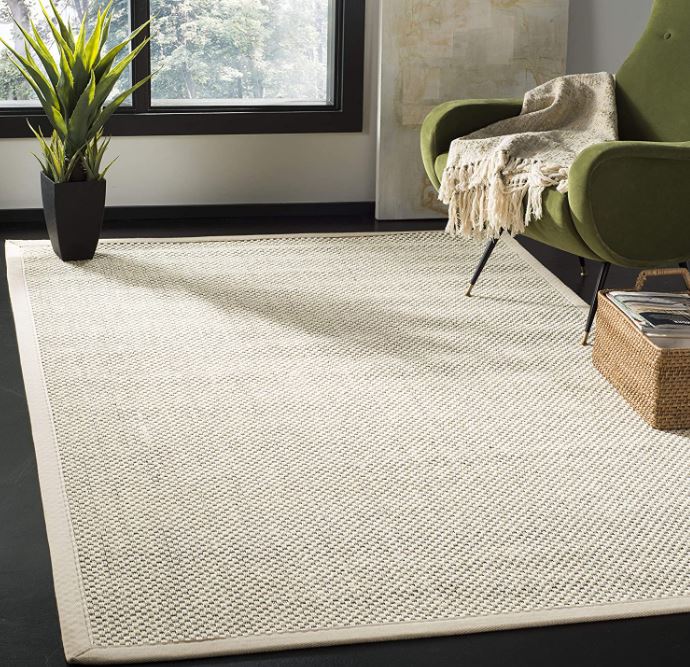Sisal vs. Jut Which Natural Carpet Fits Your Lifestyle Best

In the world of home décor, natural fiber carpets have become a symbol of sustainability, style, and comfort. Among the most popular options are sisal carpets and jute carpets, both known for their earthy charm and eco-friendly nature. However, despite their similar appearances, these two natural fibers have distinct characteristics that can greatly impact your space. Whether you’re decorating a cozy home or designing a modern office, choosing between sisal and jute carpets depends on your lifestyle, interior style, and maintenance preferences.
Let’s explore how these two beautiful natural fibers compare in terms of texture, durability, maintenance, comfort, and design versatility — helping you decide which one perfectly suits your needs.
Understanding Sisal Carpets
Sisal carpets are crafted from the long, tough fibers of the agave sisalana plant, primarily grown in Africa and Brazil. Known for their strength and durability, sisal fibers are spun into a coarse, sturdy weave that can easily withstand heavy foot traffic. These carpets have a distinct natural beige or creamy tone that gives any room an elegant, organic feel.
Sisal’s biggest strength lies in its rugged texture and longevity. It’s often used in living rooms, hallways, offices, and commercial spaces where durability is a top priority. Additionally, sisal carpets are completely biodegradable and eco-friendly, making them a perfect choice for environmentally conscious homeowners.
Understanding Jute Carpets
On the other hand, jute carpets are made from the soft, shiny fibers of the jute plant, which grows mainly in India and Bangladesh. Jute is often referred to as the “golden fiber” due to its silky texture and natural luster. Unlike sisal, jute fibers are much softer and smoother, providing a more comfortable and cozy underfoot feel.
Jute carpets are ideal for areas with low foot traffic, such as bedrooms, lounges, or reading nooks. They bring a warm, rustic charm that complements bohemian, coastal, and minimalist interiors. Since jute is a natural fiber, it’s also biodegradable, renewable, and environmentally safe, making it another great choice for sustainable living.
Texture and Feel
When it comes to texture, the difference between sisal and jute carpets is instantly noticeable. Sisal fibers are rougher and more textured, offering a firm surface that holds its shape well over time. This makes sisal ideal for areas that require durability and resilience. However, it may feel a bit coarse under bare feet, which is why many people use it in common areas rather than bedrooms.
Jute fibers, in contrast, are soft and cushiony. They add warmth and comfort underfoot, making them perfect for barefoot areas or spaces where you relax. If comfort and softness matter more to you than toughness, jute might be your go-to option.
Durability and Maintenance
Durability is where sisal carpets clearly outshine jute. Because sisal fibers are naturally tough, they are highly resistant to wear and tear, making them suitable for busy households or commercial settings. Sisal carpets also hold up well under furniture weight and maintain their structure for years with proper care.
However, both sisal and jute are sensitive to moisture. Spills should be cleaned immediately to avoid staining or fiber damage. Sisal is slightly more stain-resistant than jute, but neither performs well in damp environments like bathrooms or kitchens.
In terms of cleaning, sisal carpets should be vacuumed regularly to prevent dirt buildup, while jute carpets require gentle cleaning and dry vacuuming to maintain their softness. Both fibers benefit from professional deep cleaning once or twice a year.
Design and Aesthetic Appeal
From a design standpoint, both sisal and jute carpets bring natural elegance to interiors, but in subtly different ways. Sisal carpets are available in a variety of weaves, patterns, and tones — from classic beige to dyed variations in grey, brown, or charcoal. Their crisp and structured texture adds sophistication to modern and minimalist interiors.
Jute carpets, on the other hand, exude a softer and more relaxed look. Their woven patterns often feature natural variations in color, giving them an artisanal and handcrafted appearance. They pair beautifully with wood furniture, indoor plants, and neutral color palettes, creating a cozy and organic atmosphere.
If you prefer a polished, contemporary aesthetic, sisal is your winner. For a laid-back, boho-inspired home, jute offers the perfect vibe.
Comfort and Usage Areas
Comfort-wise, jute carpets take the lead. Their gentle feel makes them ideal for spaces where you love to walk barefoot — such as bedrooms or living areas. Sisal carpets, though firmer, provide excellent traction and resilience, making them suitable for hallways, stairs, or offices where functionality matters most.
In homes with pets or children, sisal carpets can handle wear better, but they’re less forgiving with spills. Jute is softer but more prone to damage if exposed to constant movement or moisture.
Environmental Benefits
Both sisal carpets are champions of sustainability. They are made from renewable plant fibers, biodegradable, and free from synthetic materials. This makes them an eco-conscious alternative to nylon or polyester carpets. Additionally, their natural insulating properties help maintain room temperature, reducing the need for excess heating or cooling.
Conclusion: Choosing the Right Carpet for Your Lifestyle
So, sisal vs. jute — which one fits your lifestyle best?
- Choose sisal carpets if you want a durable, long-lasting, and structured flooring option that can handle heavy use and still look stylish.
- Choose jute carpets if you prefer softness, comfort, and a warm, cozy aesthetic ideal for relaxing spaces.
Both materials are beautiful examples of how nature and design can coexist harmoniously. Whether you lean toward the rugged charm of sisal or the gentle luxury of jute, both will bring timeless elegance and eco-friendly sophistication to your interiors.














